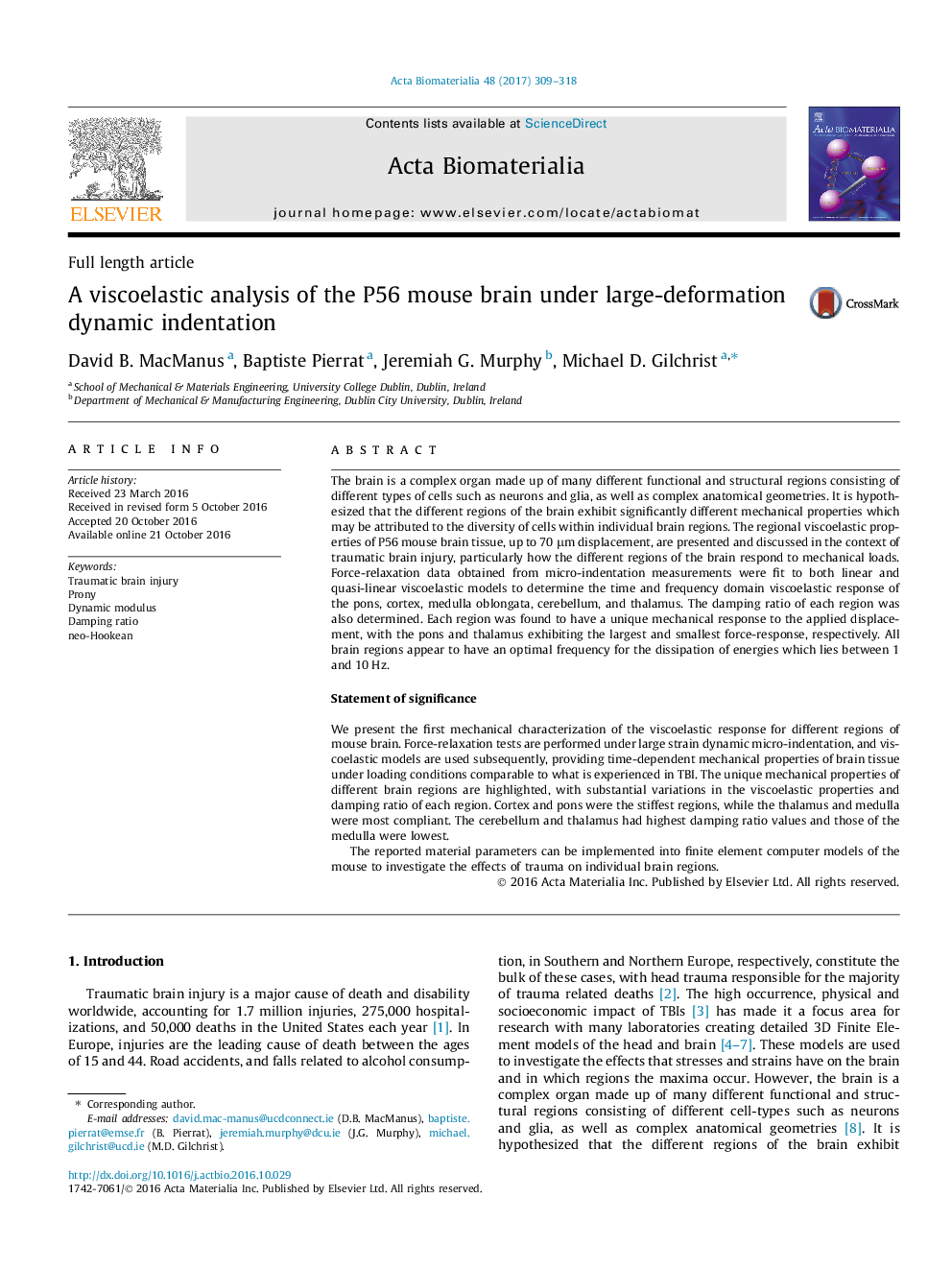| کد مقاله | کد نشریه | سال انتشار | مقاله انگلیسی | نسخه تمام متن |
|---|---|---|---|---|
| 6449919 | 1415938 | 2017 | 10 صفحه PDF | دانلود رایگان |

The brain is a complex organ made up of many different functional and structural regions consisting of different types of cells such as neurons and glia, as well as complex anatomical geometries. It is hypothesized that the different regions of the brain exhibit significantly different mechanical properties which may be attributed to the diversity of cells within individual brain regions. The regional viscoelastic properties of P56 mouse brain tissue, up to 70 μm displacement, are presented and discussed in the context of traumatic brain injury, particularly how the different regions of the brain respond to mechanical loads. Force-relaxation data obtained from micro-indentation measurements were fit to both linear and quasi-linear viscoelastic models to determine the time and frequency domain viscoelastic response of the pons, cortex, medulla oblongata, cerebellum, and thalamus. The damping ratio of each region was also determined. Each region was found to have a unique mechanical response to the applied displacement, with the pons and thalamus exhibiting the largest and smallest force-response, respectively. All brain regions appear to have an optimal frequency for the dissipation of energies which lies between 1 and 10 Hz.Statement of significanceWe present the first mechanical characterization of the viscoelastic response for different regions of mouse brain. Force-relaxation tests are performed under large strain dynamic micro-indentation, and viscoelastic models are used subsequently, providing time-dependent mechanical properties of brain tissue under loading conditions comparable to what is experienced in TBI. The unique mechanical properties of different brain regions are highlighted, with substantial variations in the viscoelastic properties and damping ratio of each region. Cortex and pons were the stiffest regions, while the thalamus and medulla were most compliant. The cerebellum and thalamus had highest damping ratio values and those of the medulla were lowest.The reported material parameters can be implemented into finite element computer models of the mouse to investigate the effects of trauma on individual brain regions.
156
Journal: Acta Biomaterialia - Volume 48, 15 January 2017, Pages 309-318